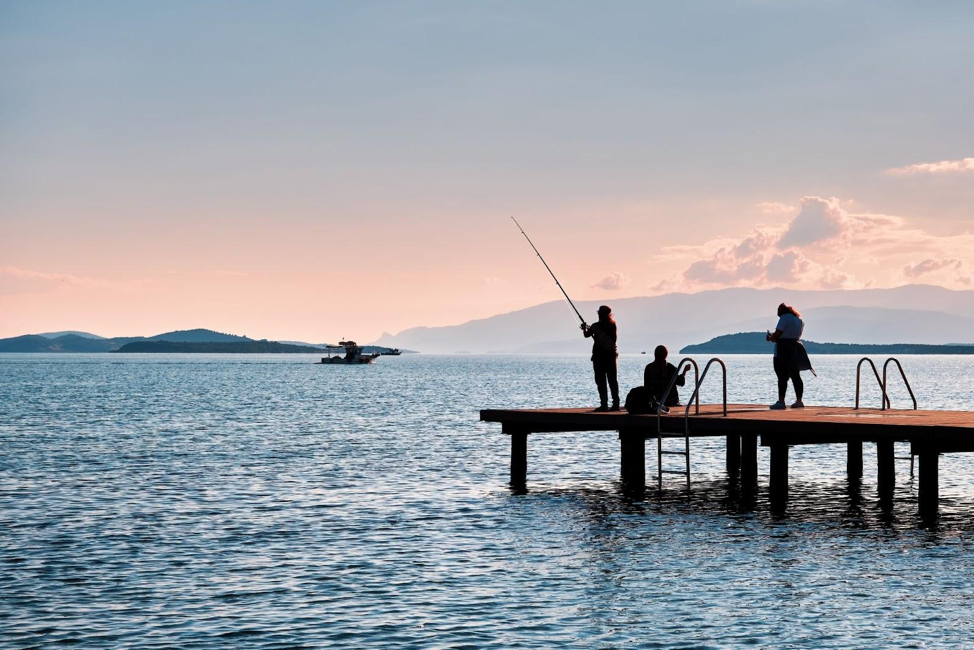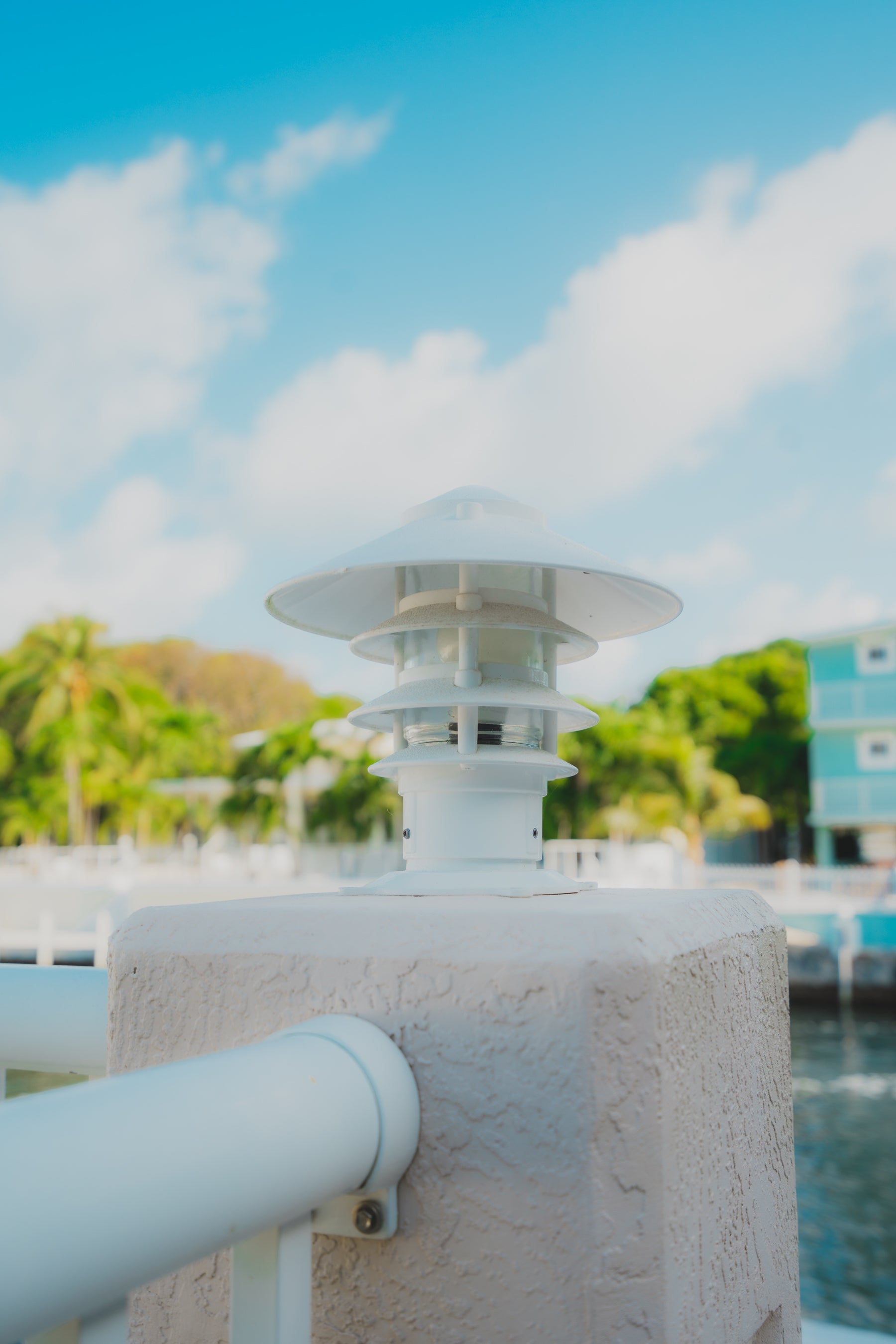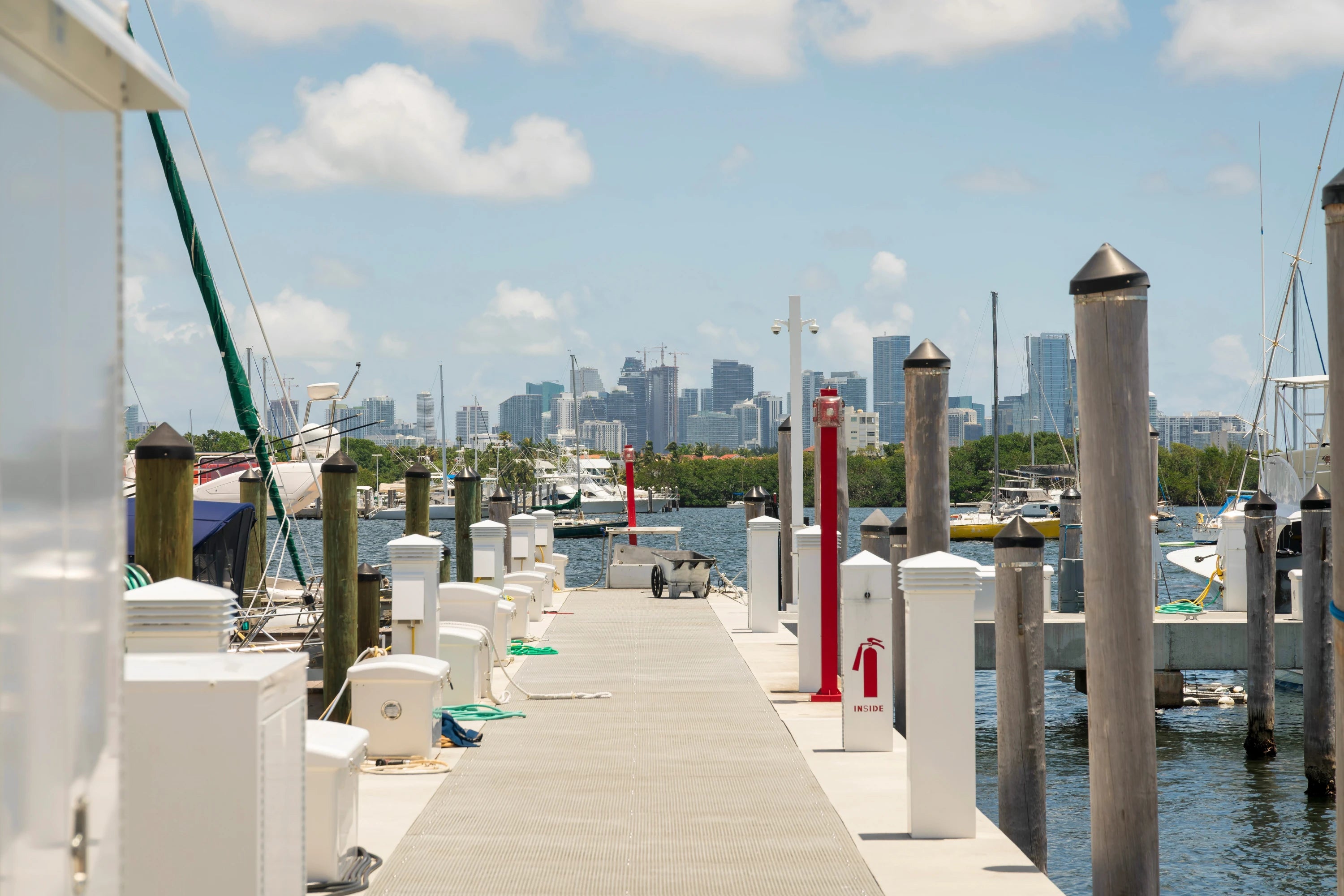
Saltwater Dock Fishing Tips for Beginners
Share
The number of coastal and waterside homes is growing each year. Naturally, the appearance of docks and piers alongside them is growing as well.
Fishing is a wonderful pastime to enjoy the quiet scenery, get in touch with nature, and explore what might be swimming under the scenic surface. Luckily, we’ve put together a beginner’s guide to saltwater dock fishing tips so that you may tackle fishing off your dock with ease.
Doing the Research
Before baiting the hook and making your first cast, it’s essential to do some research and determine what species of fish you may encounter—so you know what tackle you will need to handle any fish at the end of your line properly.
Here are a few questions to consider when targeting a new body of water for saltwater fishing:
- What species of fish are native to your area?
- Are these species typically large and require heavier rods, reels, and lines—or are they smaller and easily reeled in with light tackle?
- What bait or artificial lures should you use to maximize your chances of success?
Answering these questions prior to wetting a line will ensure you are prepared to have a fun and safe day on the water.
If you are looking to catch a specific species of fish, pay attention to its migratory behavior, typical prey, and other preferences. For example, Atlantic tarpon is a highly popular sport fish that prefers a cooler environment. Once the water is above 84 degrees, they will likely move on and migrate elsewhere. Knowing the patterns for your catch will help you prepare.
The approach will be simpler if you’re not picky about what you hook. Once armed with the proper bait and gear, all you need to do is cast!
Picking Your Gear
No matter what you’re doing, you’ll want the right tools for the job. While saltwater fishing can get very specialized, there are plenty of options that are accessible for all levels.
Bait
Like freshwater fishing, saltwater dock fishing yields the best results when using live bait. The main difference, however, is in the type of live bait you use. Live shrimp is the most versatile and can be found cheaply at most bait and tackle shops near salt water.
Different catches prefer different bait, so if you’re looking to reel in a specific fish, it’s worth hunting down their favorite food. For example, redfish prefer live crab, grouper enjoy live pinfish or mullet, and bass and flounder will nab whitebait.
Pro Tip: Have a bait bucket handy to keep your live bait down by the water while you fish.
Rods
Rod and reel combinations for saltwater fishing are categorized into three main styles based on the angler's experience level, line capacity, and overall strength.
Most saltwater anglers, at levels from beginner to expert, will pair their reels with either a fiberglass or graphite rod. Fiberglass rods are generally the least expensive option. While durable and user-friendly, they lack the sensitivity and strength graphite rods offer.
Graphite and composite rods tend to be more expensive but offer higher levels of sensitivity when detecting a bite and superior strength in overall fish-fighting capability.
The three most common types of reels used in saltwater dock fishing are spincast, spinning reels, and baitcast reels.
- Spincast reels are considered the simplest to use and are best for beginners or children. These reels have a button that locks or frees your line with a simple press, and the line-management mechanisms are hidden neatly inside a casing to minimize the chance of a tangled line.
- Spinning reels are more versatile while still being accessible to beginners. Spinning reels feature an open spool with a spinning bail that prevents the line from tangling or nesting. In addition, the reel is mounted on the bottom of the rod for better balance.
- Baitcast reels are typically best for experienced anglers. They consist of an open horizontal design that allows the user to control the line with their thumb. Baitcast reels offer a high level of accuracy and line control but also require more input from the angler. Without proper casting operation, baitcast reels can cause line tangles or “bird’s nests” easily and pose challenges for inexperienced anglers.
Lines
Choosing the correct fishing line for your saltwater dock fishing can often be overlooked, but it serves as the most important connection between you and the fish. Monofilament and braid are the two most commonly used fishing line types for saltwater fishing. Both monofilament and braided lines come in various colors and strengths, so making an educated line choice is vital for success on the water.
Monofilament
By far the most popular fishing line for experts and beginners alike, monofilament is an excellent choice for many species of saltwater fish. Monofilament line offers many different color choices (which virtually disappear underwater), is abrasion resistant, and stretches to absorb shock from fish strikes or underwater snags. It’s thin enough to tie knots with ease but will deteriorate from exposure to sunlight. Be sure to inspect your line for cuts, frays, or deterioration if you haven’t been fishing in a while to avoid line failure when fighting the “big one.”
Braid
Made for ultra-sensitivity, superior strength, and durability, braid is a good choice for those seeking big fights with tough fish. Braided lines offersoffer higher strength, smaller diameter, and zero memory compared with monofilament. Braided line also has zero stretch, making it highly sensitive to feeling small bites and underwater contours.
Other Equipment
For the best saltwater dock fishing experience, you’ll want to be well-equipped. You can also head down to the dock with the following:
- Bait Bucket: Keep a bucket of water for your live bait to keep them swimming.
- Fish Bucket or Cooler: A fish’s metabolism naturally slows when it’s cold, so a watertight container with ice will keep your catch fresh until you can clean it.
- Drop Net: You can use a net to scoop up your catch once it’s broken the surface of the water.
- Pliers: Pliers will be your best tool for removing a hook from a fish’s mouth or untangling a line.
- Polarized Sunglasses: These glasses eliminate glare off the water's surface, allowing you to see where fish are gathering underneath.
- Chair: Fishing will always involve patience and waiting. You might as well be comfortable!
Know What to Look for & Pay Attention to Your Surroundings
One of the most essential dock fishing tips for saltwater is to survey your surroundings for the right fishing conditions. Here’s everything you need to know about what to look for in the ideal fishing pier.
Evaluate the Currents
When dock fishing, you can use the current to catch fish. For example, ambush feeders, or those who wait for their prey and perform a surprise attack, face the tide. Thus, you can cast your bait up current and swim it parallel to the pier. This way, the fish you’re trying to catch will dive and perform an ambush on your bait.
The current can also help you get your bait closer to the dock pilings where fish tend to stay. Further, although floating docks don’t have pilings, the fish will likely be under the pier. So you can use the current to get your bait positioned under the platform or floating walkways.
Coverage
Coverage refers to the shaded area around the dock. More shade usually means more fish. This is because the shade cools the water, making it more comfortable, and provides shadow lines. Inshore fish like reds and trout love to stay near shadow lines.
Structures
The more structures there are, both above and below the water, the more likely there are to be fish lurking in the area. This includes structures such as:
- Boat houses
- Concrete
- Docks
- Fallen or submerged trees
- Mangroves
- Rocks
- Seawalls
If a dock has concrete pilings rather than wood pilings, you’ll find many more barnacles, crabs, and other food that fish love to feed on. Any combo of above- and below-water structures will attract more fish to the site, making it an ideal place to fish.
If there aren’t many structures, consider taking a kayak to another dock (with permission) to locate more fish. This way, you won’t spook the fish with a boat motor as you pull up to the pier.
The Drop Offs
When we say the dropoff, we don’t mean the spot in the ocean where the seafloor suddenly drops hundreds or thousands of feet. While you may think deeper water equals bigger fish, this is hardly true.
What we mean by dropoff is the area where the dock goes from its most shallow point to its deepest. For example, many docks start in several feet of water but end in eight or twelve feet because boats need deeper water to moor.
You can catch big fish in shallow waters, such as American shad, catfish, snapper, and snook. Shad and snook frequent waters between six and 12 feet, while snapper staystays in shallow and deep waters up to nearly 400 feet. Catfish typically swim at around 30 feet.
Since the deeper area will be cooler, you can fish there during the day and near the shallow area during sunrise or sunset.
Where to Fish When You Find the Right Dock
After finding the perfect fishing dock, you should begin fishing on the shadow side. Fishing near pilings is ideal since they are good hiding places for ambush feeders. You can also fish near brush, tree limbs, or weeds.
You don’t need to avoid the sunny areas, but you’ll likely have more luck on the shadow side, especially if the weather is hot.
It’s also best not to stand on the dock edge, as it can scare the fish. Instead, try to stand away from the dock as much as possible.
The Best Time to Dock Fish
Fish from the boat dock early in the morning or at sundown. Moving tides at these times attract plenty of baitfish, which means big fish will also venture in for a meal.
However, if you’re in a colder region, it may be too cold at this time to fish. In that case, you want to fish during the day when the water is warmer and the fish are more active.
Know the Rules of Dock Fishing
The best saltwater fishing tip for beginners is to learn the local laws. According to Florida Statute 379.354, dock fishing requires you to have a permit if you want to take gamefish out of the water. While this pertains specifically to Florida, similar rules apply across all U.S. states.
So even if you apply the advice here to freshwater crappie or largemouth bass fishing, you almost always need a valid fishing permit to remove any fish or other creatures from the water. This also includes fishing from a dock on private property. Therefore, before you begin dock fishing, ensure you have the correct license.
Check the operating hours, associated fees, and regulations if fishing from a public pier. The National Park Service is an excellent resource for park closings and localized fishing regulations.
Additionally, familiarize yourself with the size and bag limits for the species you want to catch. Each state has its own rules for what you can keep. These rules apply to those fishing on both public and private piers.
Finally, some public docks have gear restrictions. If you don’t know about the different types of jigs and lures, learn about saltwater fishing gear for beginners before embarking on your fishing trip. There are many kinds of bait available, such as:
- Crankbait
- Jerkbait
- Jighead
- Spinnerbait
- Swimbait
- Topwater
You can also fish with live baitfish. However, the best bait will depend on what type of fish you’re trying to catch. If you’re not using baitfish, look for soft plastic lures, as fish find them preferable. Popular lure brands include Hogy, Super Strike, and Tight Lines.
When fishing from a public dock, research popular gear frequent visitors use, as it will help you comply with the rules of the pier and catch more fish.
Preparing and Preserving Your Catch
Dock fishing allows you to prepare your catch as soon as you reel it in. Some piers have dock-mounted fish cleaning tables to clean and fillet the fish at the catch site. Others have a fish house with small stations for each step of the preparation process.
There are several ways you can prepare your fish. They include:
- Butterfly fillets
- Fillets
- Fillets on a half shell
Importantly, they all require a steady hand and skill to perfect. When preparing your catch, hold fish using gloves to lessen the smell on your hands.
If you don’t eat the fish soon after filleting it, you must preserve it. Following proper preservation techniques can ensure your fish lasts for as long as two years in the freezer. Vacuum seal the fish using a unique fish and game vacuum sealer. It can handle the high moisture content of fish that a typical vacuum seal cannot.
Reeling It In
If you’ve been “reeled in” by the lure of fishing, you may want to deck out your dock with the best equipment available, making it a fisherman’s dream. This could include a fish cleaning table to prepare and enjoy your fresh catch or dock boxes to store all of your precious equipment.
If you want to upgrade or repair your dock, find your nearest Haven Dock & Marine today to make your new fishing spot feel top-of-the-line.



